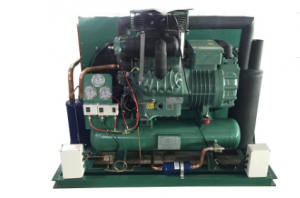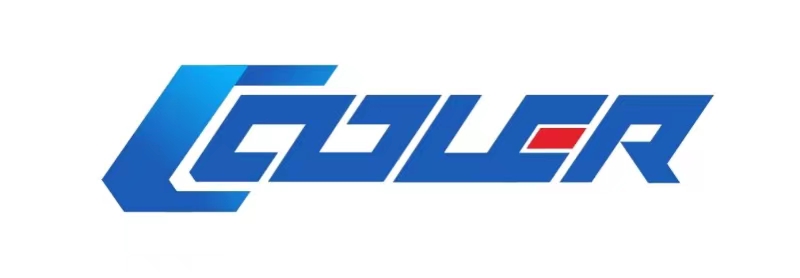Ang duha ka yugto nga compressor refrigeration cycle sa kasagaran naggamit sa duha ka compressor, nga mao ang usa ka low-pressure compressor ug usa ka high-pressure compressor.
1.1 Ang proseso sa refrigerant gas nga pagtaas gikan sa evaporating pressure ngadto sa condensing pressure gibahin sa 2 nga mga yugto
Ang unang yugto: Compressed ngadto sa intermediate pressure sa ubos-pressure stage compressor una:
Ang ikaduha nga yugto: ang gas ubos sa intermediate nga presyur dugang nga gi-compress ngadto sa condensation pressure sa high-pressure compressor human sa intermediate cooling, ug ang reciprocating cycle makompleto ang proseso sa refrigeration.
Kung naghimo og mubu nga temperatura, ang intercooler sa duha ka yugto nga compression refrigeration cycle makapakunhod sa inlet nga temperatura sa refrigerant sa high-pressure stage compressor, ug makapamenos usab sa discharge temperature sa parehas nga compressor.
Tungod kay ang duha ka yugto nga compression refrigeration cycle nagbahin sa tibuok nga proseso sa refrigeration ngadto sa duha ka yugto, ang compression ratio sa matag yugto mahimong mas ubos kay sa single-stage compression, pagkunhod sa mga kinahanglanon alang sa kalig-on sa kagamitan ug pag-ayo pag-ayo sa efficiency sa refrigeration cycle. Ang duha ka hugna nga compression refrigeration cycle gibahin ngadto sa intermediate complete cooling cycle ug intermediate incomplete cooling cycle sumala sa lain-laing intermediate cooling method; kon kini gibase sa pamaagi sa throttling, kini mahimong bahinon ngadto sa usa ka first-stage throttling cycle ug usa ka second-stage throttling cycle.

1.2 Duha ka hugna nga compression refrigerant nga mga tipo
Kadaghanan sa duha ka hugna nga compression refrigeration system nagpili sa medium ug ubos nga temperatura nga mga refrigerant. Gipakita sa panukiduki sa eksperimento nga ang R448A ug R455a maayo nga mga kapuli sa R404A sa mga termino sa kahusayan sa enerhiya. Kung itandi sa mga alternatibo sa hydrofluorocarbon, ang CO2, isip usa ka mahigalaon nga fluid sa pagtrabaho sa kalikopan, usa ka potensyal nga kapuli sa mga refrigerant sa hydrofluorocarbon ug adunay maayo nga mga kinaiya sa kinaiyahan.
Apan ang pag-ilis sa R134a sa CO2 makadaot sa pasundayag sa sistema, labi na sa mas taas nga temperatura sa palibot, ang presyur sa CO2 nga sistema medyo taas ug nanginahanglan espesyal nga pagtambal sa mga hinungdan nga sangkap, labi na ang compressor.
1.3 Pagpanukiduki sa Optimization sa duha ka hugna nga compression refrigeration
Sa pagkakaron, ang mga resulta sa panukiduki sa pag-optimize sa duha ka hugna nga compression refrigeration cycle system kasagaran mao ang mosunod:
(1) Samtang ang pagdugang sa gidaghanon sa mga linya sa tubo sa intercooler, ang pagkunhod sa gidaghanon sa mga linya sa tubo sa air cooler mahimong madugangan ang heat exchange area sa intercooler samtang ang pagkunhod sa pag-agos sa hangin tungod sa daghang gidaghanon sa mga linya sa tubo sa air cooler. Pagbalik sa pagsulod niini, pinaagi sa mga pag-uswag sa ibabaw, ang temperatura sa pagsulod sa intercooler mahimong mapakunhod sa mga 2 ° C, ug sa samang higayon, ang makapabugnaw nga epekto sa air cooler mahimong garantiya.
(2) Hupti kanunay ang frequency sa low-pressure compressor, ug usba ang frequency sa high-pressure compressor, sa ingon mausab ang ratio sa gas delivery volume sa high-pressure compressor. Sa diha nga ang evaporation temperatura mao ang kanunay sa -20 °C, ang maximum COP mao ang 3.374, ug ang maximum Ang gas delivery ratio katumbas sa COP mao ang 1.819.
(3) Pinaagi sa pagtandi sa pipila ka komon nga CO2 transcritical two-stage compression refrigeration systems, nakahinapos nga ang outlet temperature sa gas cooler ug ang efficiency sa low-pressure stage compressor adunay dako nga impluwensya sa cycle sa usa ka gihatag nga pressure, mao nga kung gusto nimo.
Oras sa pag-post: Mar-22-2023





